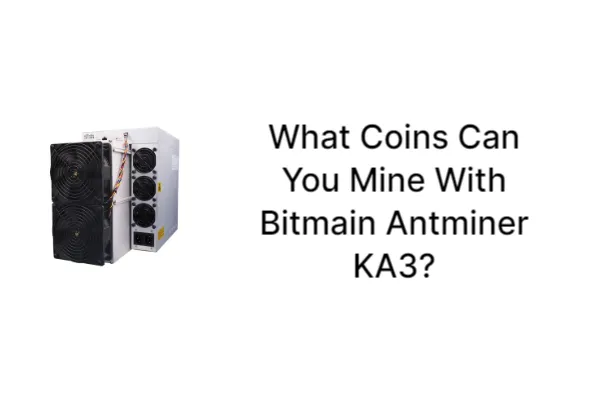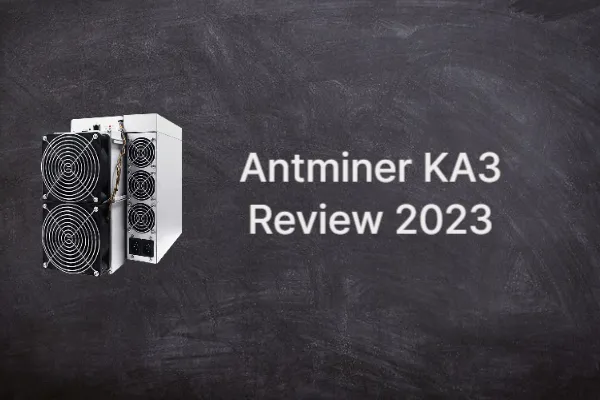Discover which Kadena mining approach is more profitable with KDA miner KA3: Solo mining for higher rewards or Pool mining for consistent income. Make an informed choice!
Mining cryptocurrencies like Kadena can be an exciting endeavor, but when it comes to maximizing profits, choosing the right mining strategy is crucial. In the world of Kadena mining, two primary options emerge: solo mining and pool mining. In this blog post, we will explore the differences between the two approaches and help you determine which one may be more profitable for you.
Table of Contents
What is Solo Mining?
Solo mining entails mining cryptocurrencies on your own, as the name would imply. You must therefore handle every aspect of the mining operation by yourself. Initially, Satoshi Nakamoto, the enigmatic founder of Bitcoin, carried out individual transactio
ns when mining first started. Before GPU, ASIC, and pool mining gained popularity, Nakamoto used a CPU to accomplish this. For a while, this was the norm.
You will require all the standard mining equipment and software, as well as a wallet to store your mined tokens or mining rewards, if you decide to go it alone.
Related reading: Best Kadena Wallet for Antminer KA3
If you want to mine independently, you’ll also need to run a full node, which can be quite energy-intensive. This indicates that if you start solo mining, your electricity bill might significantly increase. Can the earnings, however, offset the up-front and ongoing costs of solo mining? Let’s find out below.
Key Points to Consider of Solo Mining
Solo mining involves operating independently, without joining a KDA mining pool. Here are some key points to consider:
- Block Reward: One significant advantage of solo mining is the opportunity to claim the entire block reward. When mining solo, successfully mining a block means you are entitled to the full reward, which can be substantial.
- Mining Difficulty: However, solo mining comes with its challenges. As a solo miner, you compete against the entire network’s hashrate. If your mining setup has a relatively low hashrate, it may take a considerable amount of time to mine a block successfully. During this time, you won’t earn any rewards.
- Consistency: Solo mining can result in intermittent income. The time between successfully mined blocks can vary greatly due to the variance in hashrate and network difficulty. This unpredictability may not be ideal for those seeking a steady stream of income.
What is Pool Mining?
In some ways, pool mining and solo mining are very similar, but the former involves mining with other people, while the latter is done by one person. Individual miners band together and pool their computing power in the pool mining process to increase the likelihood of mining a block. Through a proof of stake mechanism, they function similarly to staking pools.
Simply put, having a lot of computing power increases the likelihood of being successful. However, in order to participate in a mining pool, you must be a miner and possess the required hardware. Thus, pool mining is comparable to solo mining in that regard, and joining a mining pool won’t help you avoid the up-front costs of cryptocurrency mining. The rewards are divided among the pool’s members after a successful block has been mined and paid out.
Yet not all mining pools are created equal. You could sign up for a proportional mining pool, in which participants receive shares based on the amount of computing power they contribute up until a block is located and successfully mined. Then, according to how many shares they own, miners receive rewards. As a result, if you don’t contribute much processing power to the pool, you won’t get a lot of benefits when a block is mined.
Read more: How to Use Bitmain Antminer KA3 (166Th) on Mining Pools

Key Points to Consider in Pool Mining
Pool mining, on the other hand, involves joining a group of miners who combine their computing power to increase the chances of finding blocks collectively. Here’s what you need to know about pool mining:
- Regular Payouts: By participating in a mining pool, you contribute your hashrate to the collective effort, increasing the pool’s chances of finding blocks more frequently. Once a block is successfully mined by the pool, the rewards are distributed among the participating miners based on their contribution. Pool mining offers regular payouts, which can be appealing for miners looking for a steady income stream.
- Smaller but Steady Income: While pool mining may result in smaller individual payouts compared to solo mining, it provides a more consistent income stream. As long as the pool continues to find blocks, you will receive a share of the rewards at regular intervals.
- Pool Fees: It’s important to note that mining pools usually charge a small fee for their services. These fees are deducted from the rewards distributed to the miners. It’s essential to factor in these fees when calculating potential profits and compare them among different pools.
Determining Profitability
To determine which mining method is more profitable for you, consider the following factors:
- Mining Setup: The hashrate of your mining setup plays a significant role. If you have a high-performance rig with substantial hashrate capabilities, solo mining may be more profitable since you have a chance to claim the entire block reward. Antminer KA3 with the hashrate of 166 Th is the most powerful KDA ASIC on the market.
- Consistency vs. Variability: Solo mining can be more profitable if you strike gold and mine blocks frequently. However, it also comes with the risk of long periods without rewards. Pool mining offers a more stable income stream due to the frequent block discoveries.
- Costs: Take into account electricity costs, hardware investment, and potential hardware maintenance expenses when calculating profitability. These costs can impact your overall profitability, regardless of the mining method you choose.
Conclusion
Deciding between solo mining and pool mining in the context of Kadena comes down to personal preferences and circumstances. Solo mining offers the opportunity for higher individual rewards, but it comes with increased risk and potentially unpredictable income. On the other hand, pool mining provides a steady income stream, although individual rewards may be smaller.
To make an informed decision, assess your mining setup’s hashrate, consider market conditions, network difficulty, and any associated costs. Furthermore, staying informed by researching and engaging with mining communities can provide.
FAQs
Is Solo Mining More Profitable Than Pool Mining?
While solo mining can generate huge rewards, it doesn’t offer the same reliable income as mining pools do. The frequency with which you receive a payout will probably be higher than if you were mining alone because pool members pool their computing power and increase the chances of finding a block.
What is the Most Powerful Kadena Miner?
Antminer KA3, The Bitmain Antminer KA3 is the most potent Kadena miner currently on the market, with a mining capacity of 166 Th/s and a power consumption of 3154 W.



